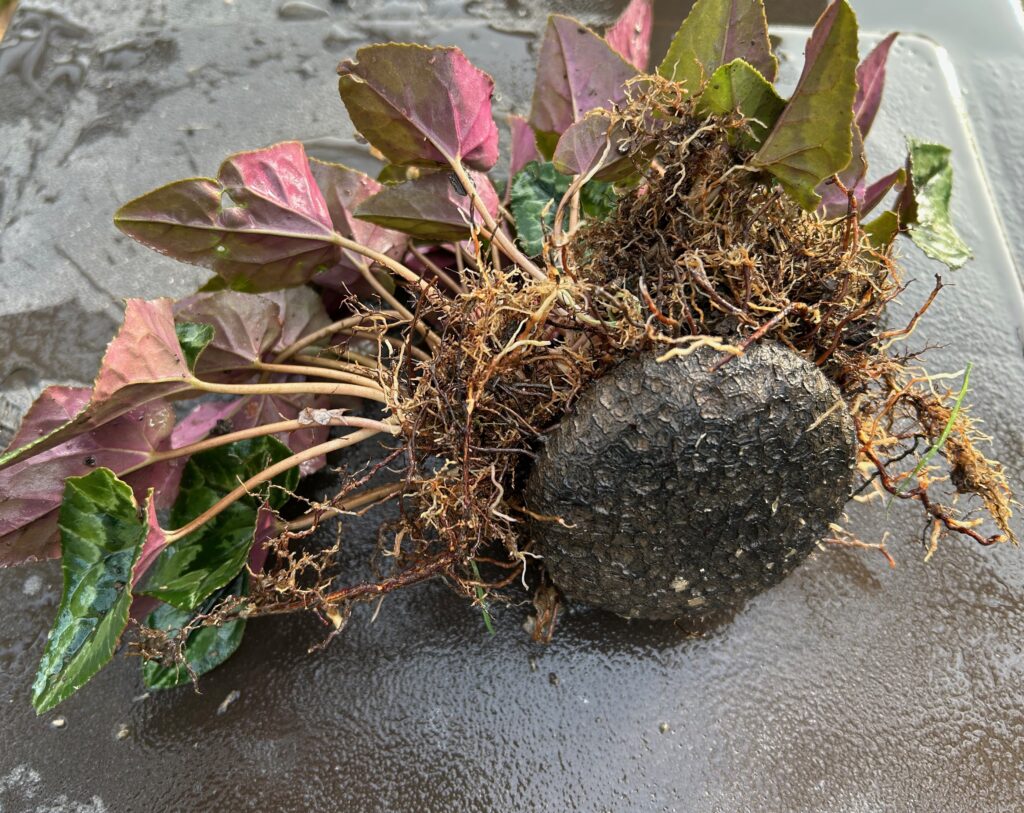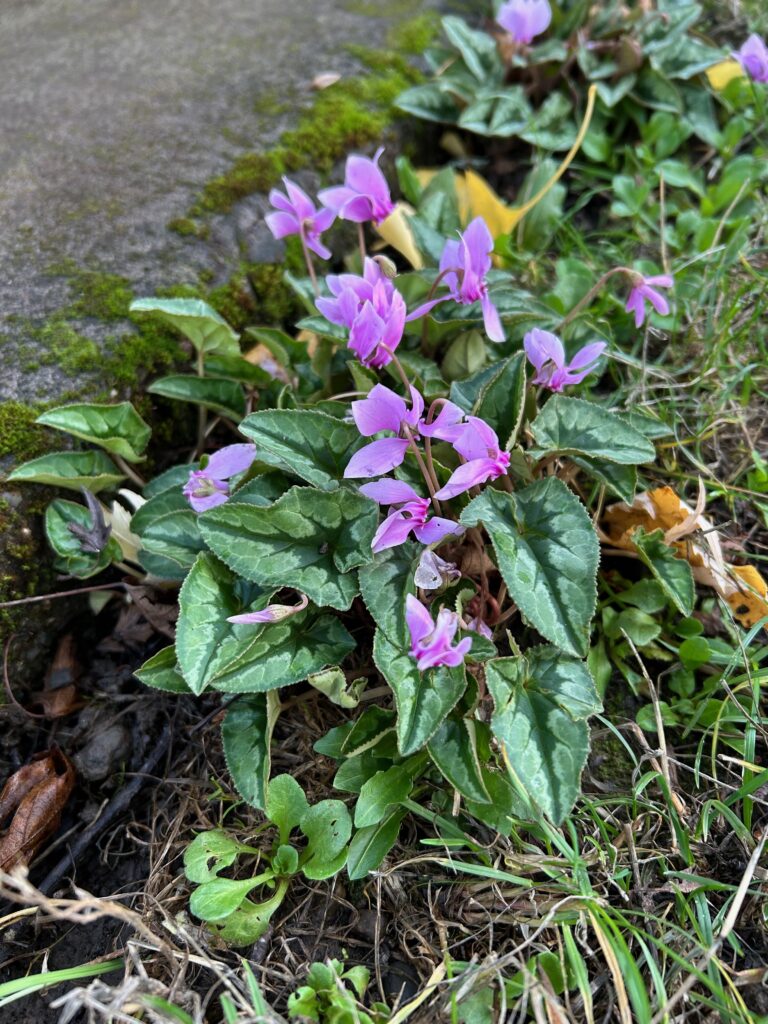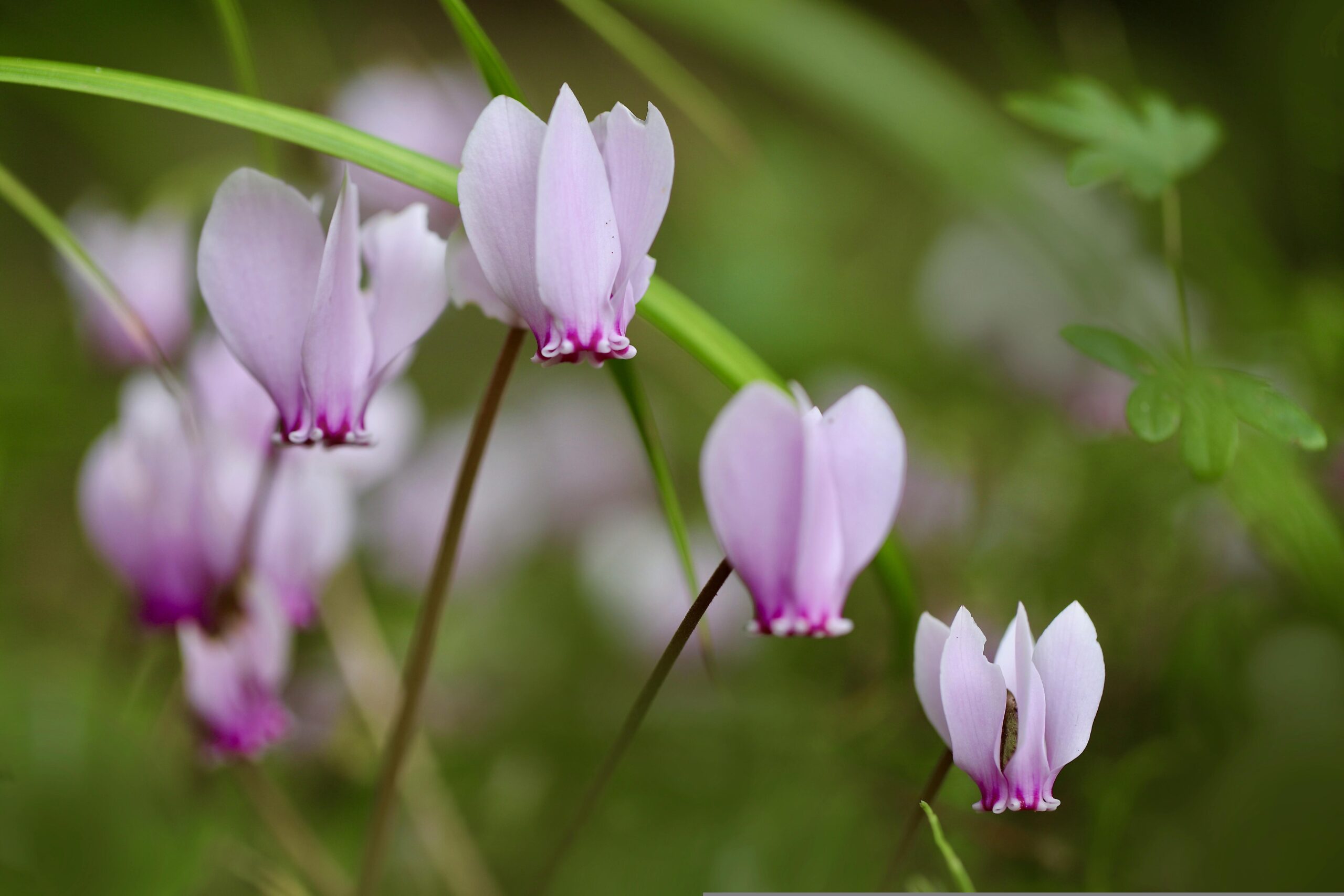



Article published in the News-Review December 20, 2024
By: Bonnie Courter
Question: I was recently gifted a beautiful houseplant called a cyclamen. I also noticed a smaller plant that looked just like it growing and blooming in my yard this fall. Are these the same variety and should I care for them the same?
Answer: Your houseplant is most likely a florist’s cyclamen, Cyclamen persicum, which is a tender species of this plant and would not survive our cold Oregon winters. There are many other hardy varieties of cyclamen, however, which thrive outdoors in our area, among them Cyclamen hederifolium and Cyclamen coum.
Cyclamen originated as perennials in their native habitats ranging from Europe and the Mediterranean and eastward to Iran. They thrive in Zones 5-9. The Greeks used this plant as an amorous medicine, supposed to cause the person who took it to fall madly in love. Cyclamen were also used as a purgative to speed the delivery of babies and as a cure for baldness.
They are cool-loving plants that emerge from tubers in the fall, growing and flowering during the winter. Come spring, they go into dormancy, dying back when temperatures rise.
Hardy cyclamen grows 4-6 inches tall, producing pink to white flowers from September to November that are 1-2 inches long with swept-back petals that resemble a shooting star. Not only are their flowers beautiful, but they have very attractive heart-shaped leaves with dark green centers bordered with lighter green and silver patterns. Cyclamen produce more foliage after their flowers are spent, persisting through the winter before going into dormancy in spring.
The tubers can be large, 3-4” in diameter, and contain a toxic compound that can lead to violent diarrhea, convulsions and paralysis when eaten raw in large quantities. Tubers may be found in bulb catalogues, or dug up and replanted elsewhere. When planting them outdoors, select a shaded spot as they thrive in partial shade and are intolerant of intense afternoon sun. They look great under trees or in shaded borders where they can benefit from filtered sunlight.
Cyclamen prefer well-drained, fertile soil that is rich in organic matter, so amend the soil with compost or peat moss to improve drainage and nutrient content. Soil that is slightly acidic to neutral pH is also preferable. Plant the tubers about 1-2 inches deep with the top of the tuber just below the surface of the soil. Space fibers about 6-10 inches apart and water gently to settle the soil around the tubers. Be sure to avoid overwatering as this will lead to tuber rot. Fertilizer is not necessary when grown in the ground, but if they’re planted in outdoor containers, you can feed them with a balanced fertilizer as new growth appears.
Hardy cyclamen are a perennial and can be long-lived. They will tend to spread, though easily contained. The larger the plant becomes, the more prolific the blooms.
Caring for your indoor cyclamen is more of a challenge as you must provide the correct environment for it to thrive. Place them in a well-lit area with indirect light. Direct sunlight can scorch the leaves, while too little light will lead to leggy growth. Air temperature needs to be in the cooler range, between 60-70 degrees during the day and slightly cooler at night. Avoid placing them in a drafty area or near heat sources.
Regularly remove spent flowers and any yellowing leaves which will encourage more blooms and prevent disease.
Watering is crucial – too much water and the tuber will rot, too little and the leaves will wilt, so water only when the soil feels dry to the touch. It’s best to water from below, not above, which could dampen the tuber. Instead, fill the saucer that’s below the pot and allow the plant to absorb moisture for 15-30 minutes before emptying the saucer. Yellowing leaves can be a sign of overwatering, poor drainage, or nutrient deficiency, and wilting can indicate both under and overwatering.
Use a half-strength balanced liquid fertilizer every couple of weeks during the growing season. After flowering and when the leaves yellow and die back, then allow the plant to go into its dormancy by reducing water and letting the soil dry out. Store the plant in a cooler, darker area until new growth appears in the fall. With proper care and giving it a period of dormancy, your indoor cyclamen can rebloom every year.
Do you have a gardening or insect question? Contact the Douglas County Master Gardeners at douglasmg@oregonstate.edu or 541-672-4461 or visit 1134 SE Douglas Ave., Roseburg. Douglas County Master Gardeners are trained volunteers who help the OSU Extension Service serve the people of Douglas County.

